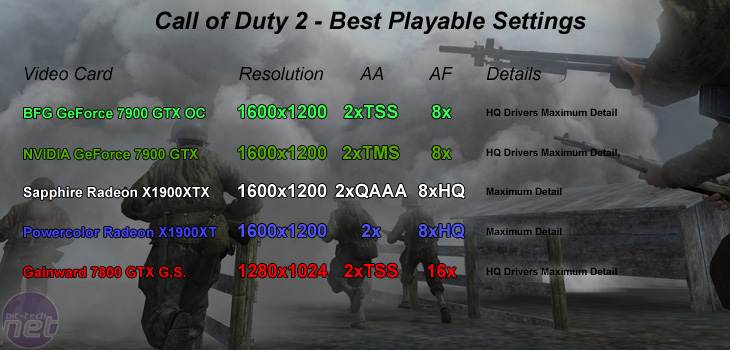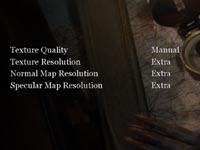Call of Duty 2:
Publisher: ActivisionWe used the full version of Call of Duty 2, patched to version 1.01. The game makes use of some awesome effects and is generally very graphically intense and immersive. That's helped by the tremendous smoke effect that Infinity Ward have created - it's better than anything we've ever seen before. There are also real time shadows and a subtle HDR lighting effect too.
The gameplay is not as linear as the first version of Call of Duty, and Infinity Ward has ditched the rather old Quake 3 engine in favour of creating its own proprietry graphics engine to render the effects. There is something about the game that makes it very intense and you often find yourself having to take a break from the action because you're too overwhelmed by its immersiveness and intensity.
We used a five minute portion of the first level in The Battle of El Alamein, starting the clock from the beginning of the battle, completing the missions in the same order, stopping the frame rate recording when we had played five minutes of the level. We made use of all four smoke grenades in our armoury at the start of the level and we ran this three times to check that our results were consistent.


This game is very shader heavy, in much the same way as F.E.A.R. is. The Sapphire Radeon X1900XTX was fast enough to play the game at the same settings as the BFG Tech GeForce 7900 GTX OC, but with high quality anisotropic filteirng enabled a tthe same time. The Radeon X1900XT was not fast enough to play the game with any adaptive antialiasing, but was still able to utilise high quality anisotropic filtering.
Even with the increase in filtering quality, the two Radeon's had higher average frame rates than the GeForce 7900 GTX's; however, the minimum frame rate - which is much more important - was pretty consistent across the board, meaning that the gameplay smoothness was reasonably equal on both ATI and NVIDIA hardware.
The overclocked Gainward GeForce 7800 GTX Golden Sample was not fast enough to play the game with antialiasing enabled at anything higher than 1280x1024. This put the new cards in a completely different league to the widely available GeForce 7800 GTX 256. The minimum frame rate on this card was also a lot lower than what we experienced on any other card that we tested here.

MSI MPG Velox 100R Chassis Review
October 14 2021 | 15:04








Want to comment? Please log in.